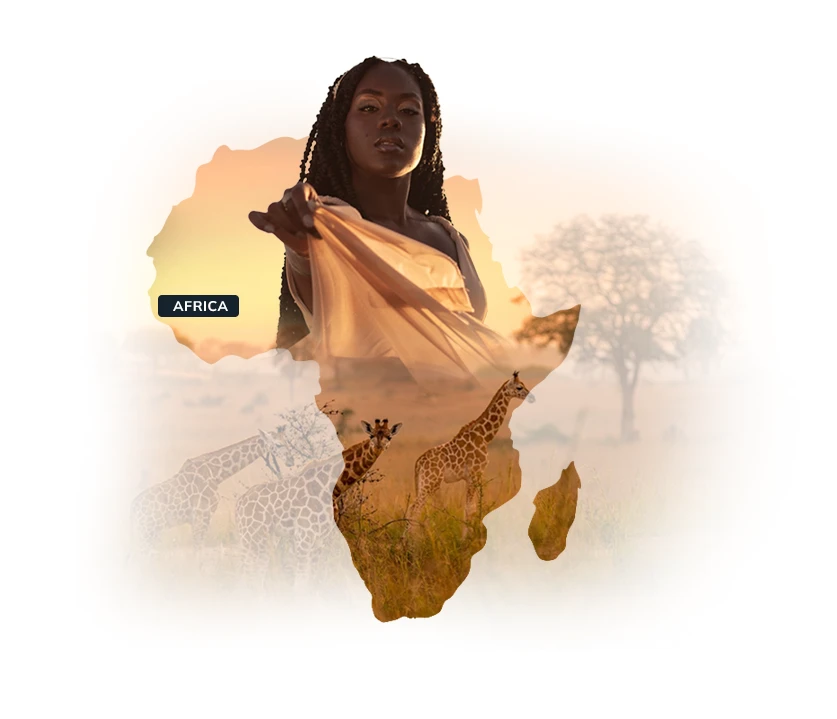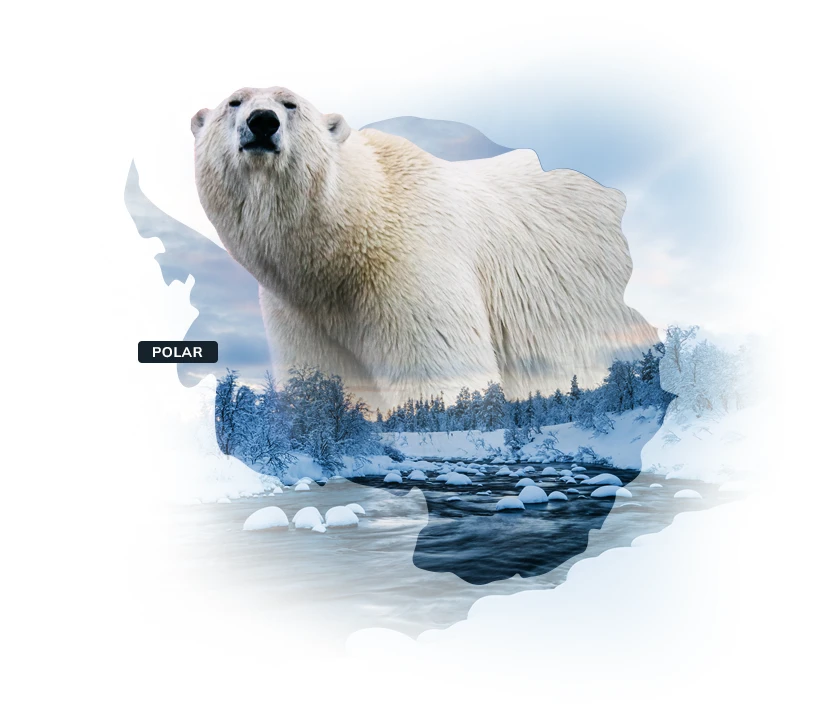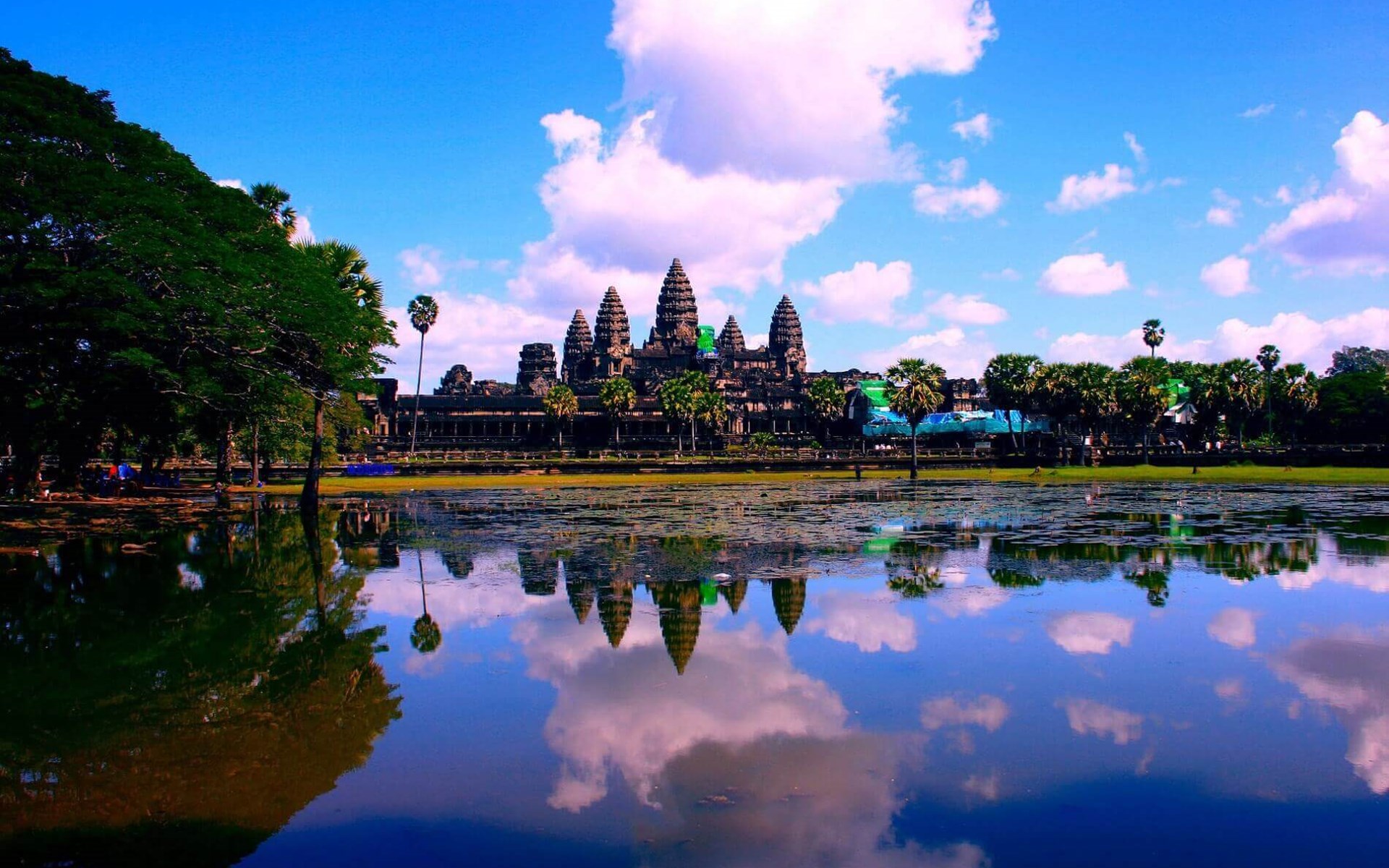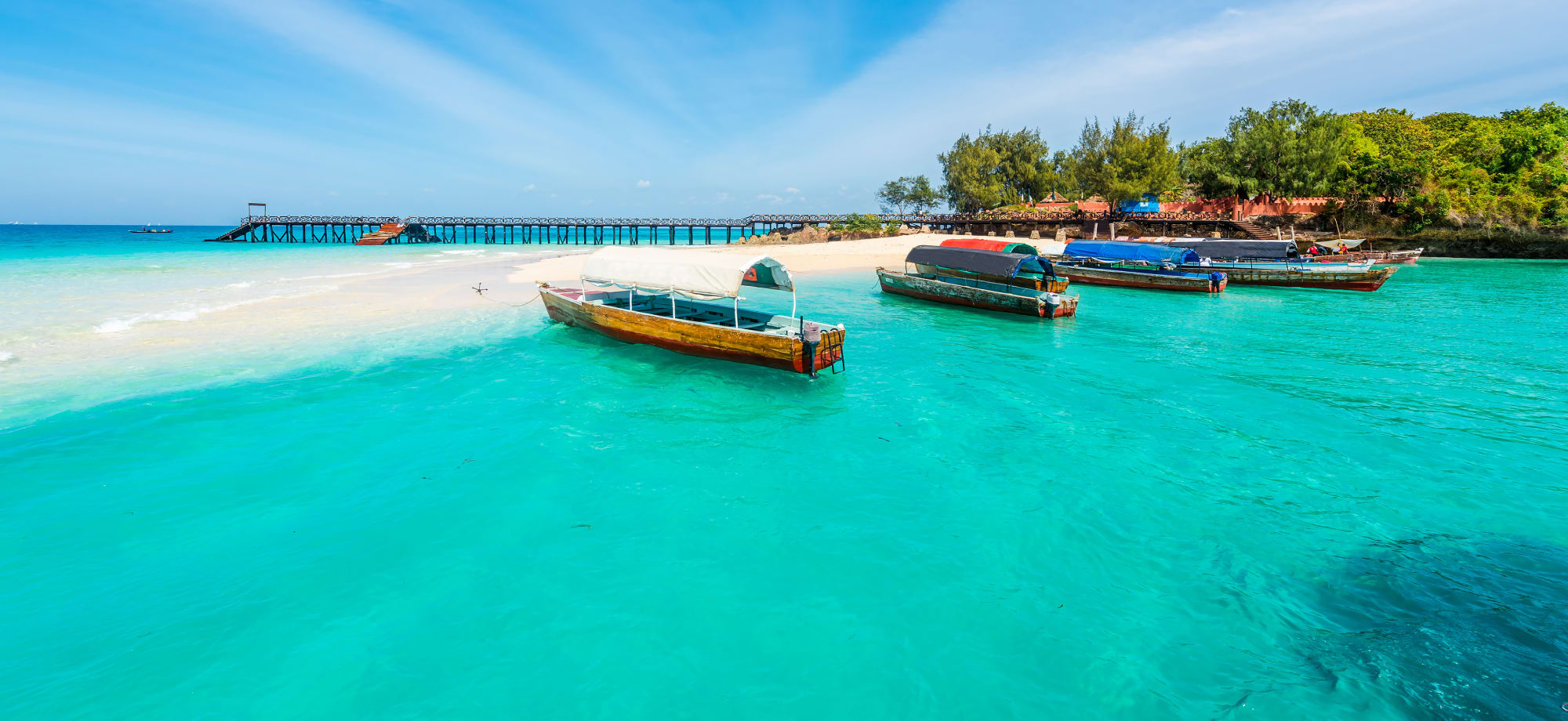A wildlife guide to BBC Earth and David Attenborough's latest documentary series
BBC Earth and David Attenborough have teamed up once more for a new wildlife documentary series, Dynasties.
Each of the five episodes in the series follows a specific species of animal, often the story of one animal during a challenging period in their lives.
Epic family betrayals, devastating tragedies and complex politics combine to make Dynasties a gripping Game of Thrones of the animal kingdom.
To celebrate this new wildlife series and its fantastic insight into the plot-twisting tales of these charismatic animal characters, we looked at each episode and the species featured in it, as well as how you can channel your own inner David Attenborough by seeing these incredible creatures in the wild in a responsible and ethical way.
Here are the heroes and heroines of Dynasties and where you can see them in their natural habitats:
- The Ruler: David the chimpanzee, Senegal
- The Survivor: Emperor penguins, Antarctica
- The Defender: Charm the lioness, Kenya (Masai Mara)
- The Rebel: Blacktip the painted wolf, Zimbabwe
- The Protector: Raj Bhera the tigress, Bandhavgarh Tiger Reserve, India
The Ruler: David the chimpanzee, Senegal

The first episode of Dynasties is a powerful political drama following alpha male David, the leader of a troop of 32 chimps in the forests of Senegal.
David’s long reign of three years looked to come to an end as rivals started to eye up his crown, but twists and turns in his story will keep you guessing who will come out on top, right up until the end.
More about chimpanzees
Chimps are our closest relatives, as we share approximately 98% of our DNA them. There are an estimated 300,000 chimpanzees in the wild, which live in groups up to 150 strong. However, this number is steadily decreasing due to hunting and deforestation, making them an endangered species.
These social animals live in forests and spend most of their time in the tree tops. When on the ground, chimps usually move on all fours, though they can walk on their back legs, like humans, if they wish.
Highly intelligent creatures, chimps use tools such as sticks to fish termites out of mounds and use leaves as containers for drinking water.
Where can you see chimpanzees in the wild?

Chimps have the widest geographic distribution of any great ape and can be found across central Africa, from southern Senegal to western Uganda and western Tanzania.
Although the chimps featured in this episode of Dynasties are located in Senegal, observation of these animals in the country is not as easy for travellers as it is in more developed safari destinations, such as Tanzania, Uganda and Rwanda.
Your best bet is probably the village of Ethiolo, followed by Mount Assirik and Parc National de Niokolo-Koba, depending on the season.
Gombe Stream National Park in Tanzania is the only park on the African continent specifically created for chimpanzees, while the country's Mahale Mountains are also known to be good for chimp-watching.
You can also track both chimps and gorillas on trekking excursions in Uganda's Kibale National Park and Rwanda's Nyungwe Forest National Park.
The Survivor: Emperor penguins, Antarctica

Rather than following the story of an individual animal, as with the other episodes in the Dynasties series, this episode looks at an entire colony of emperor penguins and how they must work together to survive harsh Antarctic winters.
Thousands of male emperor penguins huddle together with their eggs to create a giant incubator and withstand monstrous blizzards.
The episode follows the colony through the two-month incubation period, until the eggs hatch and the females return to help feed the new chicks.
More about emperor penguins
The largest of the 18 penguin species on the planet, emperor penguins can grow up to four feet tall and weigh up to 40 kilograms.
Living in colonies of up to 20,000, emperors are the only species of penguin that are not territorial – these social creatures must huddle together in order to survive.
Emperor penguins have a conservation status of “near threatened” as it is projected these animals will suffer a rapid decline in future generations due to the impacts of climate change.
Where can you see emperor penguins in the wild?

Emperor penguins are one of the trickiest of penguin species to be observed in their natural habitat. Endemic to Antarctica, the only place they can be seen by interested tourists and travellers is Snow Hill Island, in the Weddell Sea.
You can see some of the Big White's wildlife on an intrepid Antarctica cruise, but if you don’t fancy a chilly trip down to the Antarctica Peninsula, it’s best to pick a different species of penguin to follow:
Other species of penguins can be found in their natural habitats in many other places in the southern hemisphere, from the beach-loving African penguins found on the coasts on Namibia and South Africa, to the little blue penguins, yellow-eyed penguins and Fiordland-crested penguins of New Zealand.
The Defender: Charm the lioness, Kenya (Masai Mara)

When adult males abandon the Marsh Pride on Kenya’s Masai Mara, the future of the pride rests on the shoulders of almighty lioness, Charm.
She must hunt around the clock to feed the pride’s cubs, as well as defend them from hyena, buffalo and other male lions, which aim to kill all cubs in a pride so that they can mate the females.
Charm will stop at nothing to protect her cubs and her pride.
More about lions
Lions live in prides of related lionesses and their cubs, plus two or three adult males. The males rule the territory and the pride, providing protection, while lionesses do 90% of the pride’s hunting.
Adults males can reach four feet high, seven feet long and weigh up to an incredible 250 kilograms.
Lions were once found in many warm countries around the world, however there are now sadly only two confirmed populations left; a few hundred Asiatic lions in India and African lions in sub-Saharan Africa.
African lions have no natural predators, however numbers have plummeted more than 40% in the last three generations due to habitat loss, illegal wildlife trade and human conflict.
Where can you see African lions in the wild?

The majority of wild African lions can be found in East and Southern Africa, in countries such as Tanzania, Kenya, Botswana, South Africa, Zambia and Zimbabwe.
This particular episode of Dynasties focuses on Charm and her pride in the Masai Mara region in Kenya, known as one of the best wildlife destinations in the world and home to one of the highest concentrations of lions on the continent, combined with the neighbouring Serengeti region in Tanzania.
The Rebel: Blacktip the painted wolf, Zimbabwe

The story of another powerful female figure, this episode of Dynasties centres around Blacktip, the leader of a pack of 30 painted wolves in the Mana Pools area of Zimbabwe.
Due to the pack’s growing size, this alpha female must overcome challenges and take risks in order to gain more territory and feed her family.
However, when that family turns on each other, who can she trust?
More about painted wolves
Also known as African wild dogs, these creatures are confusingly neither wolves nor dogs, but a separate evolutionary canine group.
Painted wolves are also one of the Africa’s most effective hunters, beating lions, cheetahs and leopards to the top spot with up to 80% of their hunts ending in a kill.
However, a little less “beautiful” in comparison to their famous big cat neighbours, these animals have historically been treated as pests by humans, who have hunted them for taking down livestock.
Only a hundred years ago there were around half a million painted wolves living in Africa, but today that number has diminished to an estimated 6,000, earning the African wild dog the conservation status of endangered.
Where can you see painted wolves in the wild?

Due to depleted numbers, sightings of the elusive painted wolf are rare, even in their known habitats.
However, if you’re eager to see one of Africa’s most persecuted species in the wild, then your best bets are Mana Pools in Zimbabwe (home to Blacktip and her family), Laikipia in Kenya, various regions of Botswana (especially in June), Luangwa Valley and Kafue in Zambia (green season only) and the Selous in Tanzania (between July and August).
The Protector: Raj Bhera the tigress, Bandhavgarh Tiger Reserve, India

The finale of Dynasties unravels the complex family dynamic of a group of tigers, namely the troubled relationship between experienced hunter tigress Raj Bhera and her older daughter (and now dangerous rival), Solo.
With increasing threat to her smaller cubs and her territory, Raj Bhera must fight to defend her young family and her home from her own flesh and blood.
More about tigers
The largest species of big cats in the world, adult tigers can weigh up to 363 kilograms. They are solitary hunters and unlike many feline species, love the water and are keen swimmers.
Every tiger has a unique set of stripes and contrary to popular belief, white tigers are not a species of tiger, but carry a rare gene that has given them their colour.
Tigers were once found throughout Asia, but hunting and habitat loss have reduced populations to a fraction of the sizes they were only 100 years ago.
Caspian, Bali and Javan tigers are now sadly extinct; though Bengal, South China, Indochinese, Sumatran and Siberian tigers can still be found today in depleting numbers totalling 3,200. There are more tigers held privately as pets than there are in the wild.
Where can you see tigers in the wild?
It’s important to do your research before a trip or an excursion to see tigers to ensure that your visit is an ethical and responsible one – sadly, there are still many “tiger sanctuaries” and similar establishments mistreating and even drugging tigers, operating as tourist attractions.
Of the 3,200 tigers left in the wild, around 2,500 are Bengal tigers, making this species the easiest to spot.
India has some of the best nature reserves for observing Bengal tigers, with Ranthambhore National Park, Sunderbans Tiger Reserve and Bandhavgarh National Park (home to Raj Bhera and her family, as featured in this Dynasties episode) being the best options.
More on David Attenborough and Wildlife
Dynasties is yet another triumph of the partnership between BBC Earth and British national treasure, David Attenborough, following the successes of previous collaborations Planet Earth and Blue Planet (discover where to see the animals of Blue Planet in our previous article).
This new series comes hot on the tail of news that Attenborough’s next project will be a collaboration with the World Wildlife Fund and Netflix, in which he will narrate an eight-part series entitled Our Planet, which is set to be released in April 2019. Watch the trailer below for a quick preview:
If you’re interested in taking a trip to any of the wildlife-watching destinations listed in this article, don’t hesitate to contact our friendly team of Luxury Travel Specialists to chat about your ideas.















